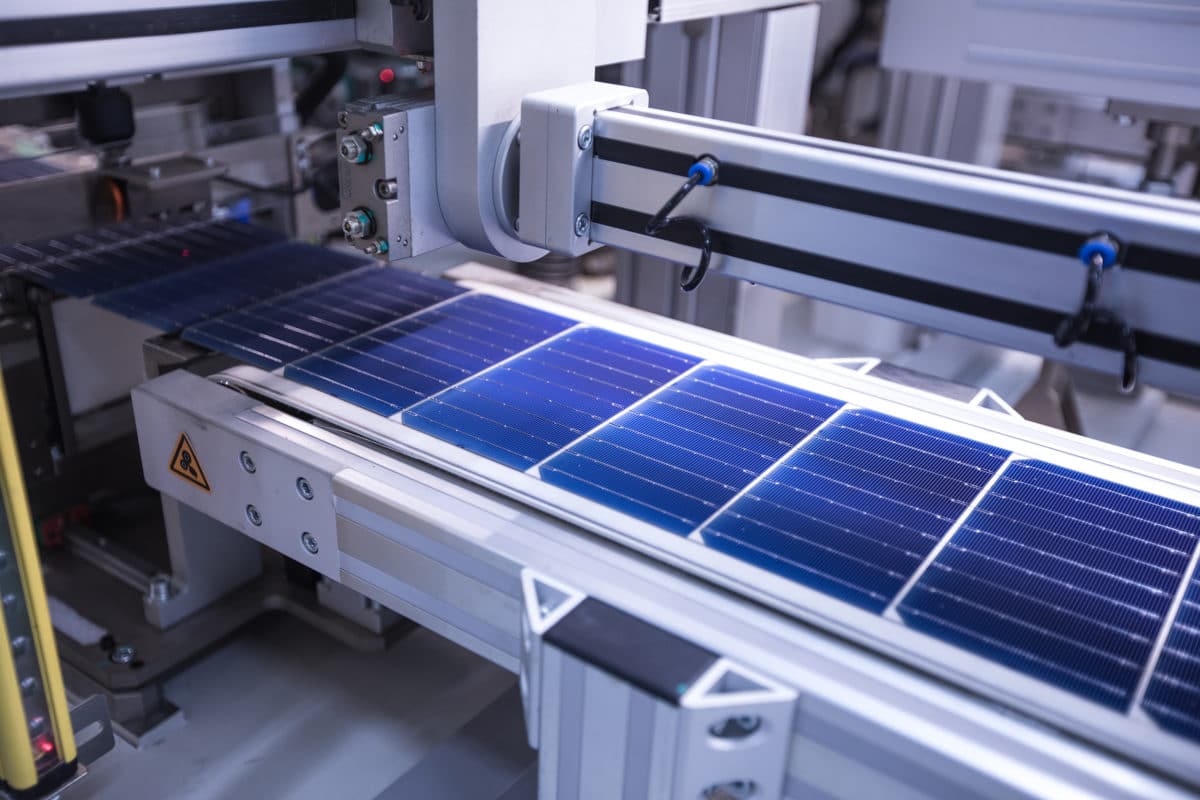German engineering association the VDMA (Verbandes Deutsche Maschinen- und Anlagenbau) today published the twelfth edition of its annual International Technology Roadmap for Photovoltaics (ITRPV) report. Based on input from experts across the supply chain, the report analyzes recent trends in the PV technology space and makes predictions as to the direction the industry will take in the next decade.
This year, the report calculates that with each doubling of installed PV capacity worldwide, prices have fallen by 23.8%. And it expects this trend to continue, with improvements in cell and wafer technologies, the move to larger wafer formats, and continued adoption of bifacial set to be key drivers in the next round of cost reduction.
Large formats
VDMA expects the older 156.75mm and 158.75mm to disappear entirely in the next four years, and the more recently introduced 166mm product to fall from a 34% share currently to around 5% in 2031. These will be replaced by the larger 182mm and 210mm formats launched in 2019, expected to account for 42% of the market each in 2031.
With these larger wafers, module sizes have also increased, and the ITRPV forecasts modules for the utility-scale sector measuring three square meters beyond to be available in 2031. “In power plant applications, 25% of modules are currently larger than 2.2m², with this share expected to increase to over 90% in 2031,” reads the report. “It is also expected that 16% of modules will be larger than 3m².”
Cell technologies
The latest ITRPV estimates that p-type PERC (passivated emitter rear cell) technology represents around 80% of the market today, and will still account for 50% ten years from now. The report expects heterojunction to grow its share to around 17% of the market by 2031, with other passivated contact cells, particularly with n-type wafers – such as TOPCon. “Concepts on n- and p-type material with passivated contacts using tunnel oxide passivation stacks at the rearside will gain market share from about 6% in 2021 up to 50% within the next 10 years,” the report continues. “We estimate that n-type bulk material will become mainstream for concepts with passivated contacts and that only a much smaller share will deploy p-type material.”
Elsewhere, ITRPV expects continued growth for bifacial technologies. Estimated at a little under 30% of the market last year, these are expected to account for almost 80% of production by 2031.
Silver consumption
The report also expects cell metallization to continue to rely on silver, noting the importance of continued reduction in its consumption per cell. The report forecasts a median value of 80mg of silver per cell for PERC technology today, falling to 50mg in 2031. VDMA warns, however, that n-type cells show much higher silver consumption and that efforts to reduce it must continue.
Despite this, VDMA does not expect any breakthrough in alternative metallization strategies without silver, and forecasts copper metallization to account for 12% of the market in 2031. “Technical issues related to reliability and adhesion must be resolved before alternative metallization techniques can be introduced. Appropriate equipment and processes also need to be made ready for mass production,” the report states. “Silver is expected to remain the most widely used front metallization material for c-Si cells in the years to come.”
This content is protected by copyright and may not be reused. If you want to cooperate with us and would like to reuse some of our content, please contact: editors@pv-magazine.com.




20 comments
By submitting this form you agree to pv magazine using your data for the purposes of publishing your comment.
Your personal data will only be disclosed or otherwise transmitted to third parties for the purposes of spam filtering or if this is necessary for technical maintenance of the website. Any other transfer to third parties will not take place unless this is justified on the basis of applicable data protection regulations or if pv magazine is legally obliged to do so.
You may revoke this consent at any time with effect for the future, in which case your personal data will be deleted immediately. Otherwise, your data will be deleted if pv magazine has processed your request or the purpose of data storage is fulfilled.
Further information on data privacy can be found in our Data Protection Policy.